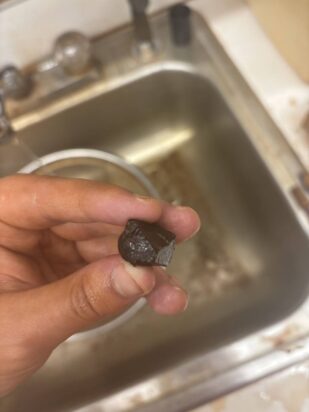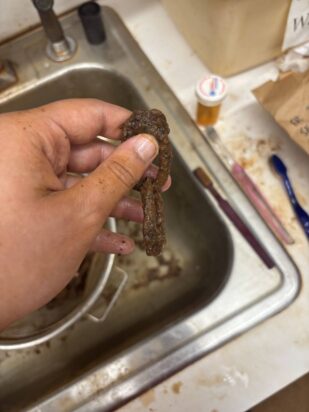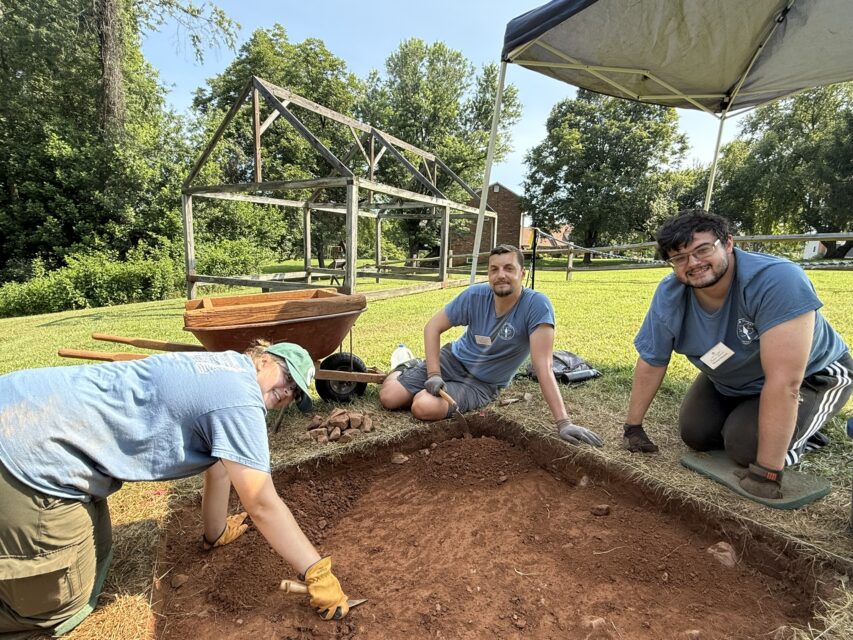Archaeology Blog
2025 Field School Week 5
By: Felix Haase and Thomas Hayman
Independence Day at Poplar Forest
This week at the Poplar Forest Field School was quite an eventful one, as most of them tend to be. Most notable was the fact that the Fourth of July was celebrated on a Friday this year, allowing for all the field school students to showcase their findings at the two dig sites to a large group of attendees. Local residents as well as people from elsewhere in Virginia and other states showed up to partake in the 249th Birthday of the United States. Visitors were treated to hear Thomas Jefferson read aloud the Declaration of Independence. The sunken lawn located at the back of the Poplar Forest house where Mr. Jefferson used to reside was filled with activities and fun, while the students of the Field School continued their usual work of digging, mapping, and filling out paperwork at their designated units. The busiest of the two dig sites was the 1857 Slave Dwelling. This was because of the fact that it was in closer proximity to the activities on the grounds. Furthermore, artifacts such as glass marbles, part of a shoe, a meat cleaver, and even some fine porcelain and whiteware ceramics have been found at this site, and we got to share some of these findings with them. Visitors to the property stopped by both dig sites to ask questions, look at artifacts, and observe the process of archaeology.
In the Classroom
In addition to the ongoing digging at both the Quarter Site and the 1857 Slave Dwelling and participating in the Independence Day activities that occurred at Poplar Forest, we have also been learning things through lecture and lab exercises. This week covered house museums, public archaeology, and ethics. One of the main ideas we explored was how to engage various groups that are underrepresented in historical archaeology, whether at Poplar Forest or in general. For example, we talked about the history of museums, and how men like Henry Ford used their wealth and influence to create idealized versions of American history, often catering to the so-called patrician class of the United States that saw themselves as the true successors to founding fathers like Jefferson and Washington. We also talked about how different and often underappreciated landscapes can be considered important landmarks for American heritage, such as mines and sites of labor strikes. Furthermore, the lab activity that was presented this week was an ethics bowl, which in of itself is not a physical bowl but rather is a set of questions. These questions all had to deal with scenarios in which potential ethical violations occurred and it was our decision to figure out what should be done in each and every scenario. Some of the scenarios were easier to decide, such as when asked if we would accept a cash bribe to hand over some less valuable artifacts (to which everyone mostly agreed that they would not) while other scenarios were much more difficult, such as when asked if we would comply with a professor’s request to have our hypothetical master’s degree thesis be published after the professor’s book on the same subject (to which students disagreed on whether they would complete the thesis regardless, go against the professor’s demands, or look for another way to obtain a degree altogether).
In the Field
At Unit ER8477 at the Quarter Site, we, along with intern Nicole, worked to uncover and excavate a post hole that may have once been used to help enclose livestock grazing on the Poplar Forest property. The post most likely dates to the early 20th century, since it was initially identified in a layer with lots of artifacts from this time period, long after the lifetime of Thomas Jefferson, and was discovered after a feature in the unit continued to yield wood chip-like artifacts instead of the usual red clay and cobblestone that is so common at the Quarter Site. Once the post hole was removed, work began on taking out a layer filled with quartz cobbles, which was also known as the cobble layer of the unit. This is primarily what was in the process of being removed on Independence Day. Many rocks came from this layer, including one or two massive quartz stones. In fact, the weight of cobbles that came from this layer was a little over 30 pounds! Other artifacts that came from this layer included brick and wrought nails. We seem to have uncovered further evidence of a garden area related to the quarter below the rocky layer that was first discovered in the 1990s, which raises new questions about the full extent of this landscape feature in centuries past. Further excavations will be required in order to more fully understand the size and scale of the garden and its overall purpose.


